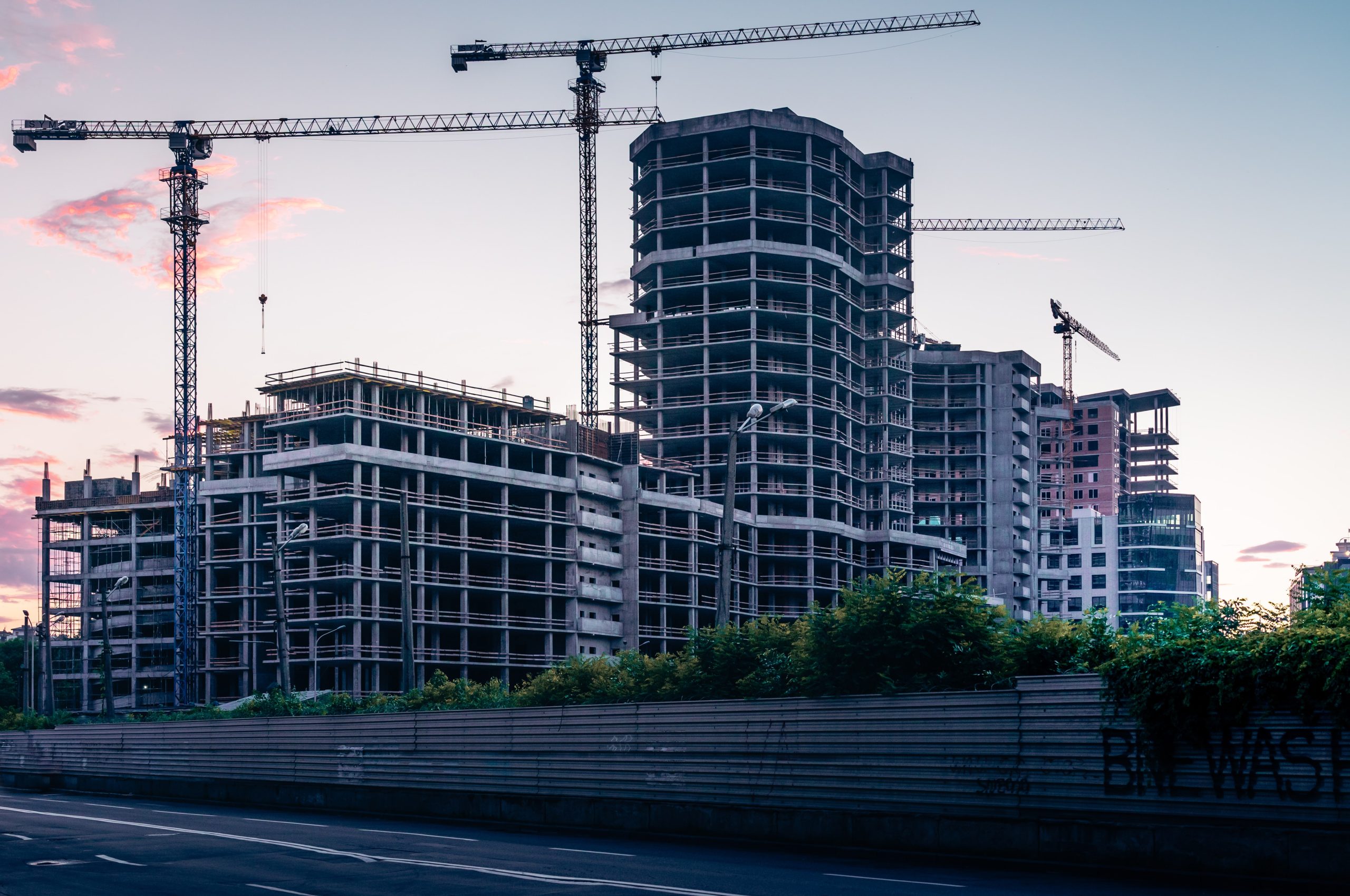Real Estate
The Importance of Home Staging: Why It Can Help Sell Your Home Faster (And For More Money)

Are you planning to sell your home anytime soon? If yes, then you must take note of one crucial factor that can significantly impact the selling process – Home Staging! Yes, presenting your home in the best possible light and showcasing its full potential can make a huge difference when it comes to attracting interested buyers. A well-staged home not only sells faster but also at a higher price point. In this blog post, we’ll dive into the importance of Home Staging and why it should be an integral part of your selling strategy. So gear up and get ready to learn how this simple yet effective technique can help you fetch more money for your property while minimizing days on the market!
What is home staging?
When you stage your home, you’re essentially creating an inviting and appealing space that potential buyers can picture themselves living in. Home staging is all about making your home look its best so that it will sell faster and for more money.
If you’re thinking of selling your home, then you should definitely consider staging it. Here are some of the benefits of home staging:
1. It makes your home more attractive to potential buyers.
2. It helps buyers to see the potential in your home.
3. It makes your home stand out from the competition.
4. It helps to sell your home faster.
5. It can help you to achieve a higher sale price for your home.
The benefits of home staging
When you take the time to stage your home before putting it on the market, you’re making a smart investment. Here are some of the top benefits of home staging:
1. Staged homes sell faster than non-staged homes.
2. Staged homes often sell for more money than non-staged homes.
3. Staging makes your home more appealing to potential buyers, resulting in more showings and a better chance of receiving multiple offers.
4. Buyers are more likely to remember a staged home over a non-staged home.
5. A professionally staged home gives the impression that the sellers have taken care of their home, which can be appealing to buyers who are looking for a turn-key property.
6. Staging can make a small home feel larger and a large home feel more inviting and warm.
7. In today’s market, many buyers start their search online, so it’s important to make sure your listing photos are as appealing as possible – and staging can help with that!
How to stage your home for sale
When you’re selling your home, first impressions matter. That’s why it’s important to take the time to stage your home before putting it on the market. Staging your home makes it more appealing to potential buyers and can help sell your home faster and for more money.
Here are some tips for staging your home:
1. Start with a clean slate. Before you start staging, declutter and deep clean your home from top to bottom. This will make your home look larger and more inviting.
2. Make a good first impression. The entryway is the first thing potential buyers will see when they come to see your home. Make sure it’s clean and welcoming by adding a fresh coat of paint, some nice plants, and a few other touches that make it look warm and inviting.
3. Create an appealing living space. The living room is usually where potential buyers will spend the most time when they visit your home. Make sure it looks its best by arranging furniture in a way that’s both functional and aesthetically pleasing, and add some personal touches that make it feel like home.
4. Show off your kitchen’s best features. The kitchen is one of the most important rooms in the house when selling because many people place a lot of importance on having a nice kitchen. Showcase your kitchen’s best features by cleaning up counters, arranging appliances nicely, and adding some decorative touches like fresh flowers or bowls of fruit.
Conclusion
Home staging is essential for anyone looking to sell their home quickly and for top dollar. With the right steps, you can transform your house from drab to fab and capture the attention of potential buyers. It’s important to choose a qualified home stager who knows what they’re doing, so that everything looks perfect when it comes time to show off your house. With the help of a good home stager, you’ll be on your way to selling your house in no time!
Real Estate
Exhibition Stand Builders in Essen: Crafting Unforgettable Trade

Introduction
Germany is renowned worldwide for hosting some of the most influential trade fairs and exhibitions. From Hannover Messe to IFA Berlin and Spielwarenmesse in Nuremberg, these events draw global attention, attracting industry leaders, innovators, and businesses. However, behind the impressive displays and interactive experiences at these exhibitions lies a key component: professionally designed and constructed exhibition stands.
In cities like Essen, where events such as SHK Essen and Spiel are held, companies rely on the skills of experienced Exhibition Stand Builder in Essen professionals to ensure their booth stands out in a competitive environment. These builders do more than set up displays—they create immersive, functional, and brand-aligned environments that leave lasting impressions.
Understanding the Importance of Exhibition Stand Setup
An exhibition stand goes beyond merely showcasing products. It serves as a strategic marketing tool that reflects a brand’s identity, captures audience interest, and facilitates engagement. For businesses participating in large-scale trade fairs in Germany. The stand is often the first physical interaction between the brand and potential clients or partners.
Exhibition stand setup requires a combination of technical expertise and creative vision. Builders must account for space limitations, visitor flow, lighting, accessibility, and technology integration—all while staying true to the brand’s goals and message.
Why Germany Leads in Exhibition Stand Expertise
Germany’s strong infrastructure, skilled workforce, and long-standing tradition of excellence make it a global leader in trade fair construction. Exhibition stand builders in Germany are known for their precision, high-quality materials, and attention to detail. They offer end-to-end services—from concept development and design to on-site assembly and dismantling.
Many of these professionals use cutting-edge tools such as 3D modeling, AR/VR integration, and digital project management systems to bring concepts to life. Whether a brand wants a minimalist modular booth or an elaborate multi-story installation, German experts can deliver it seamlessly.
The Strategic Importance of Exhibition Stand Design
A well-crafted exhibition stand does more than display products—it tells your brand’s story. At a busy trade fair:
-
First Impressions Matter: Attendees often decide in seconds whether to stop by. Bold graphics, clear messaging, and inviting layouts spark immediate interest.
-
Brand Identity on Display: Colors, fonts, and materials reflect your corporate values. Consistent branding across walls, counters, and digital screens builds trust.
-
Facilitated Engagement: Well-planned traffic flow, seating areas, and demo zones encourage conversations with potential clients or partners.
By viewing your stand as a strategic marketing asset, you maximize your return on exhibition investment.
The Role of Stand Builders in Essen
Essen, located in the heart of North Rhine-Westphalia, is a prime location for exhibitions in sectors like energy, environment, technology, and design. As a result, the demand for reliable and innovative Exhibition Stand Builder in Essen services has grown steadily. These local builders are well-versed in the specific requirements of venues like Messe Essen and understand. How to navigate the logistical and regulatory challenges associated with high-profile events.
They also bring regional expertise, knowing what resonates with both local attendees and international visitors. Their familiarity with venue layouts, electrical setups, lighting conditions, and safety protocols allows them to work efficiently, even under tight deadlines.
Innovative Design and Sustainable Practices
A key strength of Germany’s exhibition stand builders lies in their innovation. Modern stands are no longer static—they are interactive environments equipped with digital screens, live demonstration zones, augmented reality features, and social media integration. These elements not only enhance the visitor experience but also make the brand more memorable.
Sustainability has also become a major priority. Many German firms offer modular and reusable structures, eco-friendly materials, and energy-efficient lighting systems. This aligns with the environmental goals of many international businesses, adding another layer of value to professional exhibition services.
Comprehensive Services Offered by German Builders
Top exhibition stand builders in Germany provide comprehensive packages that include:
- Conceptual design and 3D visualization
- Custom fabrication and modular structures
- On-site assembly and dismantling
- Storage and refurbishment services
- Multilingual client support
- Compliance with German and EU safety standards
These services ensure that clients can focus on marketing, sales, and networking, while the technical and creative aspects of the exhibition are handled by professionals.
Conclusion
For companies aiming to make a powerful impression at Germany’s world-class trade fairs, partnering with skilled professionals is essential. A thoughtfully designed and expertly constructed booth reflects the quality and credibility of the brand. Setting the stage for meaningful business interactions.
Whether participating in a niche show or a global expo, businesses benefit from the knowledge and experience of a trusted Exhibition Stand Builder in Germany. These experts understand not only the technical aspects of setup but also the cultural nuances and strategic goals behind every booth. Their ability to merge function with visual appeal ensures that companies stand out and succeed on the show floor.
With a dynamic and experienced team handling the logistics, construction, and aesthetics, exhibitors are free to focus on building relationships and showcasing their innovations. And in the fast-paced, high-stakes environment of international trade fairs, that focus can make all the difference.
Real Estate
How Real Estate Agencies Are Winning Big with Scriptzol Auction Script

The real estate industry is undergoing a significant transformation. With the rapid rise of digital technologies, traditional property sales methods are giving way to faster, smarter and more scalable solutions. One such solution that’s making waves is Scriptzol’s Property Auction Script, a powerful customizable platform that enables real estate agencies to run their own online property auctions.
This script isn’t just software, it’s a strategic upgrade for real estate businesses looking to increase efficiency, reach more buyers and close deals faster than ever before. Let’s explore how real estate professionals are using Scriptzol’s auction platform to win big in 2025 and beyond.
The New Age of Real Estate: Why Auctions Are Gaining Traction

Today’s property buyers and sellers want transparency, speed and control. That’s where online property auctions shine. Unlike traditional sales, where price negotiations can drag on for weeks, auctions create urgency. Buyers place real-time bids, sellers get instant feedback on interest and agencies manage the process effortlessly.
In fact, online auctions are:
- 35% faster than traditional sales methods
- 50% more likely to attract competitive bids
- Growing globally at a CAGR of over 12% through 2027
As real estate firms look to streamline operations and serve tech-savvy clients, platforms like Scriptzol’s are becoming indispensable.
What Is Scriptzol’s Property Auction Script?

Scriptzol’s Property Auction Script is a fully functional, white-label online auction platform built specifically for real estate agencies and property dealers. It allows businesses to launch their own branded auction website where users can list properties, place bids and finalize transactions in real time.
Core Features Include
- Live real-time bidding system
- Admin and user dashboards
- Bid history and auto-notification system
- Payment gateway integration
- SEO-friendly architecture
- Mobile-responsive UI
- Google Maps integration
It’s ready to deploy out-of-the-box and can be customized to reflect your agency’s brand identity.
How Real Estate Agencies Are Using Scriptzol to Their Advantage

Agencies that adopt Scriptzol’s Auction Script are experiencing measurable improvements in everything from lead generation to sales velocity. Here’s how it’s driving success:
1. Reducing Sales Cycles
Time is money in real estate. Traditional property sales can take weeks or even months. With Scriptzol’s auction system, listings are sold within days, not weeks. Timed bidding creates urgency, encouraging faster decisions and quicker closings.
2. Expanding Buyer Pools
Online auctions remove geographical barriers. International investors, remote buyers and developers can all participate. Scriptzol’s mobile-ready, global-friendly interface ensures agencies tap into a broader, more diverse buyer market.
3. Enhancing Transparency
Real-time bidding ensures market-driven pricing and builds trust. Buyers see what others are bidding and can make informed decisions. Sellers know they’re getting fair value and agencies don’t have to mediate drawn-out negotiations.
4. White-Label Customization
Unlike generic platforms, Scriptzol gives agencies full control over branding. You can launch a custom domain, apply your logo and colors and maintain your identity. This makes your auction platform an extension of your real estate business, not a third-party tool.
5. Boosting Profit Margins
Because the process is automated and efficient, agencies can handle more listings with fewer resources. Plus, competitive bidding often leads to above-market sales prices, driving greater revenue.
Built-In SEO to Boost Visibility

Most property auction platforms don’t focus on search optimization but Scriptzol does. Its SEO-friendly structure is designed to help your listings rank in Google and attract organic traffic.
SEO-Ready Features
- Custom meta titles and descriptions
- SEO-friendly URLs for each listing
- Schema markup for property details
- Fast page loading times
- Mobile-first design
In short, the script is structured to increase your site’s visibility, helping you reach more buyers without spending big on ads.
Trending Use Cases for 2025

Distressed and Foreclosure Properties
Banks and asset managers need to move properties quickly. Online auctions are the fastest, most transparent method.
Land Development Projects
Selling undeveloped land or commercial plots via auction helps secure deals from developers and investors in record time.
Luxury Property Sales
High-end buyers often prefer private, competitive bidding rather than public listings. The white-label feature makes Scriptzol ideal for luxury markets.
Bulk Property Liquidation
Real estate portfolios, investment properties and REIT assets can be auctioned off in bulk, with automated handling of each unit.
Real Estate Professionals Speak Out
“Since adopting Scriptzol, we’ve cut our average sales cycle by 60%. It’s a must-have for any modern real estate firm.” -Austin
“We used to spend thousands on marketplace listings. Now, buyers come directly to us. Scriptzol puts the power back in our hands.” -Anand
“Being able to host branded auctions has boosted our reputation and made us look like industry leaders.” -Vincent
What Sets Scriptzol Apart from Other Solutions?
There are plenty of auction scripts and platforms out there but here’s why Scriptzol is different:
Final Thoughts
Online property auctions aren’t just a trend, they’re the future. Whether you’re a boutique agency or a large-scale real estate firm, Scriptzol’s Property Auction Script provides the flexibility, speed and tools you need to compete and succeed in today’s digital-first market.
By investing in a customizable, feature-rich auction platform, agencies can:
- Cut down sales time
- Reach global buyers
- Automate processes
- Enhance brand visibility
- Drive more revenue
In 2025 and beyond, success in real estate belongs to the agencies that adapt quickly and innovate wisely.
Ready to take your real estate business to the next level? Launch Your Own Online Property Auction Platform with Scriptzol
This article was originally published by — https://www.scriptzol.com/blog/real-estate-agencies-winning-with-scriptzol
Real Estate
Discover Your Dream Home: Lodha Elanor Kolshet Thane

If you are searching for a luxurious dream home in Thane, look no further than Lodha Elanor Kolshet Thane. Located in the heart of Kolshet, this exclusive residential project offers a blend of sophisticated living and strategic convenience. Whether you are a first-time buyer or an investor looking to buy property in Thane, Lodha Elanor presents an irresistible opportunity.
Let’s explore what makes this project a standout, from its thoughtfully designed units to its unbeatable location and world-class amenities.
Lodha Elanor Kolshet Thane – Project Overview
Lodha Elanor is not just a place to live; it is a lifestyle statement. Developed by the renowned Lodha Group, this residential complex promises comfort, style, and functionality. With its modern architecture and lush green surroundings, it creates a perfect urban retreat for families and professionals alike.
This property for sale in Kolshet offers a range of 3BHK, 3BHK Duplex, and 3.5BHK units, catering to varied lifestyle needs. Each apartment is designed to maximize natural light, ventilation, and space utilization, ensuring a serene and refreshing environment.
Strategic Location Advantage
One of the biggest advantages of Lodha Elanor Kolshet Thane is its prime location. Situated in the vibrant Kolshet area, it enjoys excellent connectivity to major hubs in Thane and Mumbai. The project is close to Eastern Express Highway and Ghodbunder Road, making commutes smooth and hassle-free.
Reputed schools, colleges, hospitals, and shopping centers surround the development, ensuring residents have everything they need within easy reach. Important landmarks include:
-
Smt. Sulochanadevi Singhania School
-
Viviana Mall and Korum Mall
-
Jupiter Hospital and Hiranandani Hospital
-
Thane Railway Station (20 minutes drive)
Living here means enjoying the convenience of city life while being cocooned in a peaceful and green neighborhood.
Unit Configurations, Carpet Area, and Floor Plans
Lodha Elanor offers spacious and beautifully planned residences. Here are the detailed configurations and carpet areas for each unit type:
3BHK Apartments
The 3BHK units at Lodha Elanor are designed to offer a perfect balance of style and functionality. These units start from 1120 sq. ft. of carpet area and extend up to 1343 sq. ft. The floor plans feature:
-
A large living and dining area for family gatherings.
-
Three spacious bedrooms with attached bathrooms.
-
A modern kitchen with ample utility space.
-
Wide balconies that provide breathtaking views of the city skyline.
3BHK Duplex Apartments
For those seeking extra space and a more luxurious layout, the 3BHK Duplex units are ideal. These units offer a generous 2200 sq. ft. carpet area, making them perfect for large families or those who love expansive homes. The duplex floor plans include:
-
A grand double-height living room.
-
Separate dining and family lounge areas.
-
Three lavish bedrooms with en-suite bathrooms.
-
A stylish modular kitchen with utility space.
-
Private terraces and balconies that offer excellent ventilation and natural light.
3.5BHK Apartments
The 3.5BHK units are designed for families who desire additional space for a home office or a guest room. These residences combine comfort and practicality, with thoughtfully designed layouts. The carpet areas and floor plans ensure:
-
Three full-sized bedrooms plus a multi-purpose room.
-
A spacious living and dining area.
-
Modern kitchen with separate utility space.
-
Well-ventilated bathrooms and balconies for a relaxed lifestyle.
World-Class Amenities at Lodha Elanor
Lodha Elanor Kolshet Thane redefines modern living with a wide array of amenities that cater to all age groups. The project ensures residents experience a fulfilling lifestyle without stepping out of their gated community. Key amenities include:
-
Clubhouse: A state-of-the-art clubhouse with spaces for indoor games, reading lounges, and multipurpose halls.
-
Swimming Pool: An infinity-edge pool to unwind and relax.
-
Fitness Center: Fully-equipped gymnasium and yoga studio to keep you fit and healthy.
-
Children’s Play Area: Safe and fun zones designed for kids to play and explore.
-
Landscaped Gardens: Beautifully maintained green spaces, jogging tracks, and seating areas to relax amidst nature.
-
Sports Facilities: Courts for tennis, basketball, and badminton to promote an active lifestyle.
-
Security: 24×7 CCTV surveillance and manned security to ensure complete safety.
Why Buy Property in Thane?
Thane has emerged as one of the most sought-after real estate destinations in the Mumbai Metropolitan Region. With its excellent infrastructure, growing commercial hubs, and improved transportation facilities, Thane offers a perfect blend of work and life balance.
Kolshet, in particular, stands out for its serene surroundings, making it an ideal residential location. Investing in Lodha Elanor Kolshet Thane means not only owning a dream home but also securing a high-growth asset for the future.
Lodha Elanor – A Smart Investment Choice
Whether you plan to live here or invest for rental income and appreciation, Lodha Elanor makes for a smart choice. The project offers:
-
High ROI potential due to Thane’s booming real estate market.
-
Easy access to employment hubs, ensuring constant rental demand.
-
Modern design and premium construction quality that stand the test of time.
Conclusion
Lodha Elanor Kolshet Thane is a project that truly ticks all the boxes – premium design, strategic location, spacious units, and top-notch amenities. If you are looking to buy property in Thane, this is your chance to own a home that brings luxury and convenience under one roof.
Whether it’s a stylish 3BHK, a grand 3BHK Duplex, or a versatile 3.5BHK, Lodha Elanor offers options to suit every lifestyle and need. The thoughtfully designed floor plans and spacious carpet areas ensure maximum comfort and usability, making it a standout in Thane’s real estate market.
Contact Housiey to schedule a visit to the project site today. Experience first-hand what makes Lodha Elanor Kolshet Thane your perfect dream home.
-
Business2 years ago
Cybersecurity Consulting Company SequelNet Provides Critical IT Support Services to Medical Billing Firm, Medical Optimum
-
Business2 years ago
Team Communication Software Transforms Operations at Finance Innovate
-
Business2 years ago
Project Management Tool Transforms Long Island Business
-
Business2 years ago
How Alleviate Poverty Utilized IPPBX’s All-in-One Solution to Transform Lives in New York City
-
health2 years ago
Breast Cancer: The Imperative Role of Mammograms in Screening and Early Detection
-
Sports2 years ago
Unstoppable Collaboration: D.C.’s Citi Open and Silicon Valley Classic Unite to Propel Women’s Tennis to New Heights
-
Art /Entertainment2 years ago
Embracing Renewal: Sizdabedar Celebrations Unite Iranians in New York’s Eisenhower Park
-
Finance2 years ago
The Benefits of Starting a Side Hustle for Financial Freedom
































